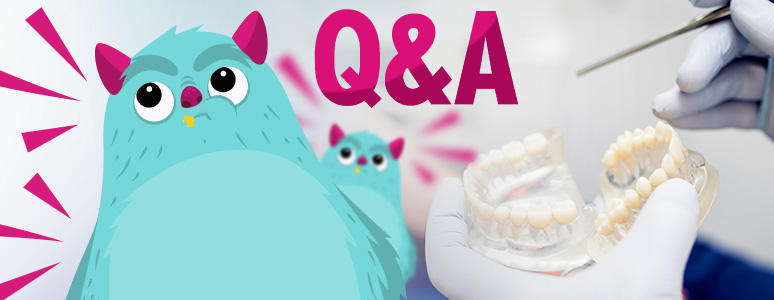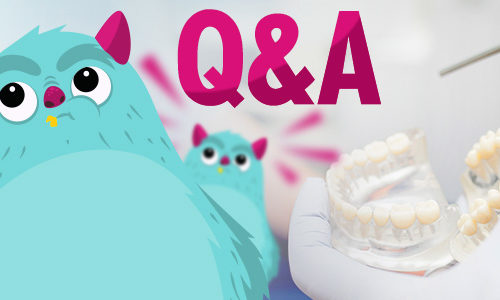-
Top Whitening Kits of 2024: Your Guide to a Brighter Smile
Ever dreamt of flashing a captivating, bright smile that can light up any room? Everyone does, right? Well, the quest for pearly whites has led to the burgeoning popularity of teeth whitening. With a myriad of teeth whitening products flooding the market, achieving that gleaming smile is just a few brush strokes away. But before you embark on this journey to a radiant smile, it’s essential to understand the world of teeth whitening. Key Takeaways Explore the four primary types of at-home teeth whitening kits and consider features, application techniques, active ingredients & efficacy for natural teeth. Recent technological breakthroughs have revolutionized teeth whitening with LED lights to accelerate process…
-
Managing Wisdom Teeth Swelling: Effective Tips for Comfortable Recovery
Swelling after wisdom teeth removal, also known as wisdom teeth swelling, might seem like an unwelcome guest, but in reality, it is an expected part of your healing journey. This swelling, while often discomforting, signals that your body is hard at work repairing the extraction site, paving the way towards a comfortable recovery. But the question is, how do we manage this wisdom teeth swelling effectively, and what are the best methods to minimize discomfort? Let’s find out. Key Facts Swelling following wisdom teeth removal is a normal part of the healing process, though potential complications can cause increased inflammation. Reducing swelling and promoting comfortable recovery involves cold compresses, anti-inflammatory…
-
Invisalign Lite vs Full: Difference, Cost, Which Do I Need?
Key Facts Invisalign is a modern orthodontic treatment using clear, removable aligners to straighten teeth Invisalign Lite is targeted at less complex cases requiring minor corrections Invisalign Lite usually lasts about 6 months Invisalign Lite involves fewer aligners (around 10 to 14) compared to Invisalign Full Invisalign Lite is ideal for minor adjustments like slight overcrowding or small gaps Invisalign Lite generally offers a more cost-effective solution due to the shorter treatment time and fewer aligners Both Invisalign Lite and Full provide customized treatment plans based on individual dental profiles What is Invisalign? Invisalign is a modern orthodontic method that employs a series of custom-made, clear plastic aligners to shift…
-
Apicoectomy – Cost, Procedure, Recovery, Success Rate, Indications, Dental Code
Apicoectomy, also known as root end surgery, is a form of endodontic surgery that becomes necessary when a standard root canal treatment or subsequent endodontic treatment fails to heal an infection in the tooth’s root. This procedure is often the only alternative to extract a tooth, making it a critical treatment option in preserving natural teeth. Key Facts Apicoectomy is a surgical root end procedure, commonly referred to as endodontic microsurgery It involves the removal of the root tip (or apex) and sealing the root end An apicoectomy is typically considered when a previous root canal treatment hasn’t been successful or has failed over time This procedure offers an alternative…
-
Maxillofacial Surgery – Cost, Meaning, Before and After, Procedures
Key Facts Maxillofacial surgery is a specialized branch of surgery that deals with the diagnosis and treatment of diseases, injuries, and defects in the head, neck, face, jaws, and the hard and soft tissues of the oral (mouth) and maxillofacial (jaws and face) region It encompasses a wide range of procedures from minor tooth extractions to complex reconstructive surgeries Some common procedures in maxillofacial surgery include wisdom teeth removal, jaw surgery, dental implant surgery, and facial trauma treatment Maxillofacial procedures are relatively common, with millions of people undergoing various treatments each year This field is essential for managing conditions that affect chewing, speaking, breathing, or the appearance of the face…
-
Can You Eat After A Filling? How long until I can eat after filling?
This article is a part of our Q&A series in which we give detailed answers to our readers' questions. Have a question? Don't hesitate and send it to us to get a detailed answer! Dental fillings are a common procedure used to treat cavities or tooth decay. One of the questions that frequently arise after getting a filling is regarding eating habits. In this guide, we will provide a comprehensive overview of what you should know about eating after getting a dental filling. List of questions that are covered in this Q&A include: Can You Eat After A Filling? How long until I can eat after filling? How long after…
-
Immediate Tooth Extraction – Cost of Urgent Instant Removal
Key Facts Immediate tooth extraction refers to the removal of a tooth during the first visit to a dentist It is often performed in cases of severe pain, infection, or when the tooth is damaged beyond repair Not all cases are suitable for immediate extraction. The dentist’s evaluation will determine whether immediate extraction is feasible The procedure can take anywhere from a few minutes to over an hour, depending on the complexity Immediate tooth extraction is a process where a tooth is removed from its socket in the jawbone without delay. Unlike planned extractions, this procedure is usually performed in response to an urgent dental issue. The immediate extraction may…
-
Laughing Gas at Dentist – Side Effects, for Kids and Adults, Formula, Price Cost
Nitrous oxide, commonly referred to as laughing gas, is a colorless, odorless gas that has been used in dentistry for its mild sedative and analgesic properties. When inhaled, it induces a state of relaxation, reduces anxiety, and diminishes pain during dental procedures. It’s called “laughing gas” because some people find that it gives them a euphoric or giddy feeling. Laughing gas was discovered in 1772 by the English scientist Joseph Priestley. Its first use as an anesthetic was by dentist Horace Wells in the 1840s. It gained popularity because it was effective and safer compared to the other anesthetics available at that time. Today, it is widely used in dental…
-
Abscessed Tooth Extraction (Pulling Tooth with Abscess)
An abscessed tooth is a common dental issue characterized by the formation of pus due to infection. It can lead to significant discomfort and, if left untreated, severe complications. In some cases, tooth extraction becomes necessary to rid the human body of the infection. This article delves into the tooth extraction procedure for dental abscesses, highlighting the importance of proper care and medical attention. Key Facts An abscessed tooth is characterized by a pus-filled pocket caused by a bacterial infection in different regions of the tooth or gum The condition can manifest in various forms, such as periapical abscess (at the tip of the root) or periodontal abscess (in the…
-
Silver Diamine Fluoride for Caries Management
Key Facts Silver diamine fluoride (SDF) is an FDA-approved topical medication used to treat tooth sensitivity with off-label use to treat dental caries It is a colorless liquid containing silver particles, water, fluoride, and ammonia SDF has been used for several decades in other countries and gained attention in the United States as an effective treatment for caries in recent years This non-invasive treatment can be particularly beneficial for children, elderly patients, and individuals with special needs One of the side effects of SDF is that it can stain carious lesions black Off-label use warning as of 2023 Silver Diamine Fluoride (SDF) currently has FDA clearance as a desensitizing agent…


